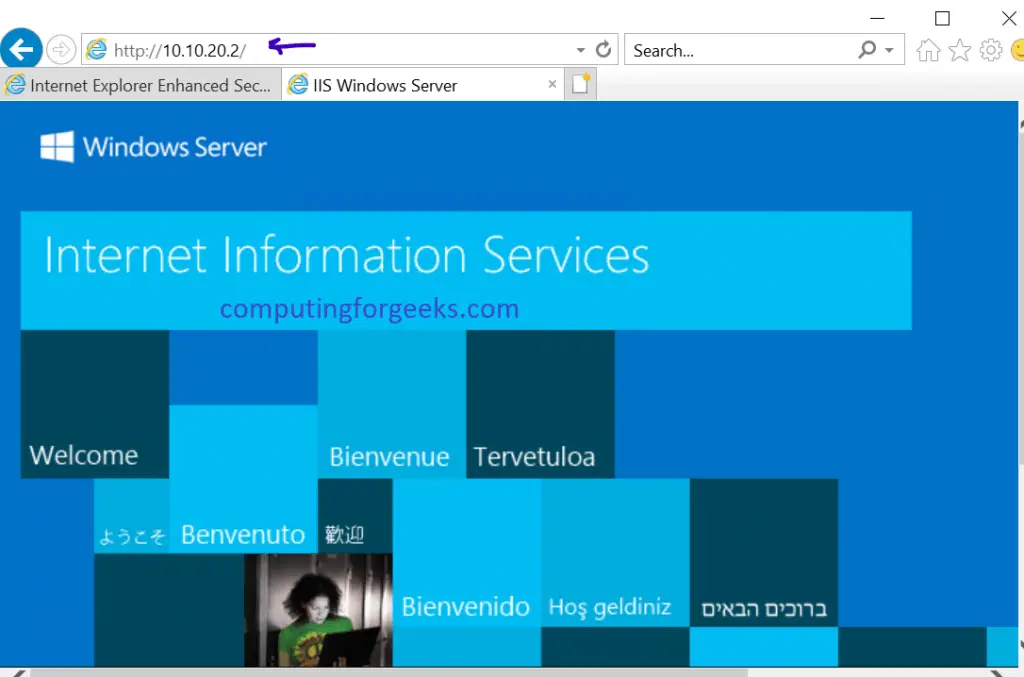Iis Recommended Configuration Manual Download
- Iis Recommended Configuration Manual Download Windows 7
- Iis Recommended Configuration Manual Download Windows 10
Atom.io, Notepad or another plain-text editor for the editing configuration file. The specific text editor doesn't matter, just as long as it doesn't save as rich text or try to convert apostrophes and quotes into curly quotes. Recommended for easier install/upgrade, but not required. Full documentation is available in the download package from github releases site. Download zip and look in BonCodeTomcatConnectorManual.pdf file. The documentation also contains manual installation instruction, however, using automated installer contained in package is recommended. As usual any feedback is appreciated. Use our guide below to configure a default website on IIS Server 2019. How To Configure Default Site in IIS Server 2019. After we are done installing IIS Webserver, we now have a lot to do such as configuring Virtual Directories, using the default website, Adding Websites, SSL and TLS stuff and much more. More on Windows. Internet Information Services (IIS) is the web server software bundled with Windows Server, as well as certain client versions of Windows.Please note Apache web server has much better community support and there are usually fewer problems when running Moodle on Apache. PHP 7.1 is installed via IIS Express. A newer version of PHP is recommended. A global FastCGIModule for PHP is created. This means all sites on your IIS server can run PHP code via this module. Change priority listings if you wish to run different versions. You can use the PHP Manager or manual process to over-ride this. The IIS 7 Recommended Configuration in WebPI v3 is the equivilent of the IIS 7 components that were installed automatically in WebPI v2 when you installed an application. For example, in WebPI v2 and on a clean Win7 machine, if you selected to install DotNetNuke, WebPI would automatically bring along a set of IIS components so your application.
- StoreFront 2.1
- StoreFront 2.0
- StoreFront 1.2

Objective
This article describes how to improve the responsiveness of Receiver for Web to the first request on the Windows Server 2008 R2 platform.
Background
A common issue faced by website administrators is the need to perform “initialization” tasks and “warm up” tasks for a web application.
For example, when Receiver for Web first starts, it makes requests to the Store Service and Authentication Service, both of which are isolated web applications. This means that three web applications have to be initialized before the first request can be handled by Receiver for Web.The resolution is to have the web applications always running and initialized, by utilizing IIS Application Initialization for IIS 7.5. This enables website administrators to improve the responsiveness to Receiver for Web sites by loading the all supporting web applications before the first request arrives. By proactively loading and initializing all the dependencies, IT Professionals can ensure that their Receiver for Web sites are responsive at all times.
Instructions
To Configure IIS Application Initialization on Windows Server 2008 R2, install the IIS 7.5 Application Initialization feature. This can be downloaded using the following link:
When this has been successfully deployed, complete the following configuration changes:
Important: As this is a manual process, Citrix recommends to create backup of the all the files that are edited.
Open the application host configuration file found at: C:WindowsSystem32inetsrvconfigapplicationHost.config.
Configure each Citrix Application Pool at the path: /configuration/system.applicationHost/applicationPools.
Add the startMode attribute, as shown in the following example:
<add name='Citrix Delivery Services Authentication'
autoStart='true' managedRuntimeVersion='v2.0'
managedPipelineMode='Integrated' startMode='AlwaysRunning'>Expected Citrix Application Pools are:
Citrix Delivery Services Authentication
Citrix Delivery Services Resources
/madden-18-pc-key-generator.html. Citrix Receiver for Web
Citrix Delivery Services
Configure each Citrix Web Application at the path: /configuration/system.applicationHost/sites.
Ni z2 djay app. Add the preloadEnabled attribute, as shown in the following example:
<application path='/Citrix/Authentication'
applicationPool='Citrix Delivery Services Authentication'
preloadEnabled='true'>Expected Citrix Web Applications are:
/AGServices
/Citrix/Authentication
/Citrix/Roaming
/Citrix/<StoreName>
/Citrix/<StoreName>Web
Save and close the files.
Verify the configuration changes by running the IISReset command and ensure that there are no errors on restart.
Modify the StoreFront Services web.config files by adding the following to the system.webServer section at path: /configuration/system.webServer.
<applicationInitialization skipManagedModules='true'>
<add initializationPage='/endpoints/v1' />
</applicationInitialization>The files are found at the following locations:
C:inetpubwwwrootAGServicesweb.config
C:inetpubwwwrootCitrixAuthenticationweb.config
C:inetpubwwwrootCitrixRoamingweb.config
C:inetpubwwwrootCitrix<StoreName>web.config
Modify the Receiver for Web web.config files, by adding the following to the system.webServer section at path: /configuration/system.webServer.
<applicationInitialization skipManagedModules='true'>
<add initializationPage='/Home/Index' />
</applicationInitialization>The config file is found at: C:inetpubwwwrootCitrix<StoreName>Webweb.config.
Verify the configuration by running the IISReset command and in Task Manager where a w3wp process exists for each IIS Application Pool.
